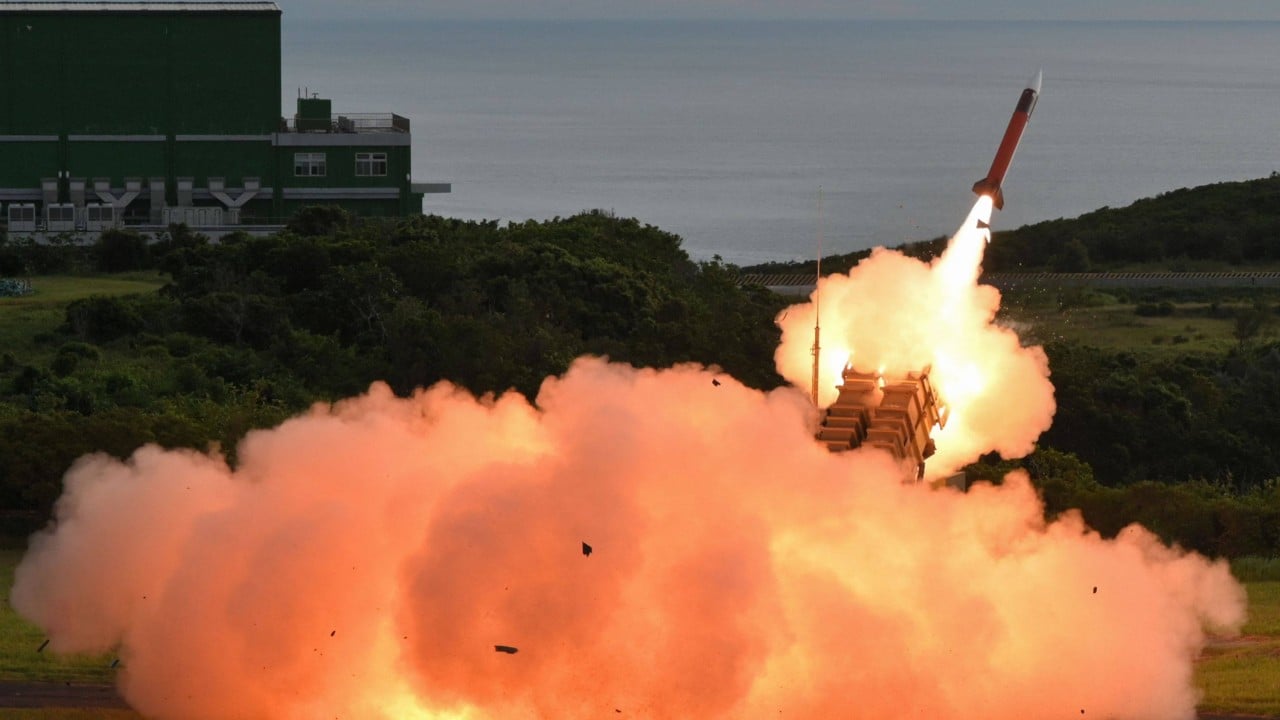Taiwan’s military has put its missile firepower on show in a live-fire drill aimed at countering potential air and sea attacks from the People’s Liberation Army.
The annual exercise was held at the Jiupeng base – a sensitive test site on the island’s southeastern coast in Pingtung county – on Tuesday. It was open to the media for the first time in 12 years.
At least three types of missiles were fired to simulate the interception of PLA warplanes and munitions.
Taiwanese media footage showed two US Patriot PAC-II surface-to-air missiles being fired to test their interception capabilities.
That was followed by the launch of a Tien Kung-III (Sky Bow-III) land-based surface-to-air missile, which was built in Taiwan and designed to destroy incoming cruise missiles.

A RIM-66 Standard medium-range ship-launched missile was also fired by a Taiwanese frigate from waters off the coast.
All of the missiles hit their targets at the Jiupeng base, where the island’s top weapons maker – the National Chung-Shan Institute of Science and Technology – tests its missiles.
The missiles “hit their targets smoothly”, defence ministry spokesman Sun Li-fang told reporters.
“This indicates that not only is the training of our soldiers very solid, but our weapon systems have also been verified as effective in the live-firing process,” he said.
According to Taiwanese media, before the four missiles were fired, the military also test-launched an extended version of the Hsiung Feng II-E – a surface-to-surface cruise missile developed by the Chung-Shan Institute.
Sun did not confirm that launch, only saying that the live-fire drills were conducted in line with the military’s annual plans.
“As some of the tested missiles are rather sensitive we won’t comment on what types of missiles were used in the drills,” he said.
The development of the Hsiung Feng II-E (Brave Wind II-E) missile system has been kept secret by the island’s military since it is one of the counterstrike weapons that would be used in the event of a cross-strait conflict. With a range of at least 1,000km (620 miles), the missile could reach the Yangtze River and Pearl River deltas in mainland China.

Taiwan’s military has both missiles developed at home and those bought from the US as part of its asymmetric warfare strategy to deal with the much larger PLA, which has ramped up pressure on the self-ruled island in recent years.
Beijing regards Taiwan as part of its territory that will eventually be brought under its control – by force if necessary. Most countries, including Taipei’s main international backer, the United States, do not recognise Taiwan as independent, but Washington opposes any attempt to take control of the island by force and is committed to supplying weapons for its defence.
Since William Lai Ching-te of the independence-leaning Democratic Progressive Party was elected as Taiwan’s leader in January, Beijing – which has labelled him an “obstinate separatist” who could bring war to the Taiwan Strait – has stepped up military intimidation against the island.
Taiwan’s military will continue the annual exercise in the east of the island over the next two days, with more drills planned for the first week of September.


